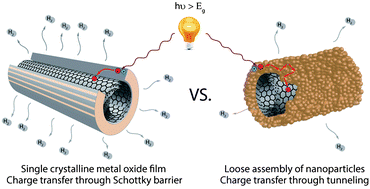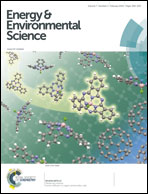Interface engineering in nanocarbon–Ta2O5 hybrid photocatalysts†
Abstract
Hybridizing inorganic nanomaterials with carbon nanotubes and graphene constitutes a powerful approach towards creating new functional materials for environmental and sustainable energy applications. Their superior performance originates from synergistic effects based on charge and energy transfer processes at the hybrid's interfaces. However, only few studies have been devoted so far towards rationally designing these hybrids. In this work we demonstrate that engineering interfaces as well as the morphology of the functional inorganic compound can maximise the synergistic effects in hybrids, thus further enhancing the hybrid's photocatalytic properties. Particularly, we have stimulated the growth of ultra-thin single-crystalline layers of tantalum (V) oxide (Ta2O5) with preferred orientation at substantially reduced crystallisation temperatures, by utilising the graphitic CNT surfaces as seed crystals through heterogeneous nucleation. The resulting hybrids possess outstanding activities for the evolution of hydrogen via sacrificial water splitting that are about 35 times higher than those of comparable materials such as tantalates. The additional improvements in this hybrid are attributed to the single-crystalline nature of the coating, which alleviates transport of electrons to the interface, as well as the formation of a Schottky-type junction between the metallic nanocarbon and the semiconducting metal oxide, which facilitates charge transfer and thus charge separation at the interface.


 Please wait while we load your content...
Please wait while we load your content...